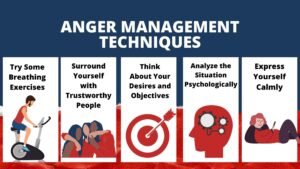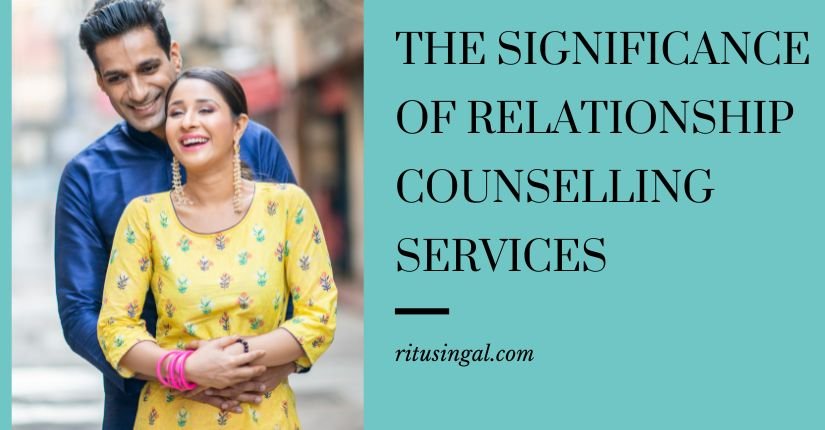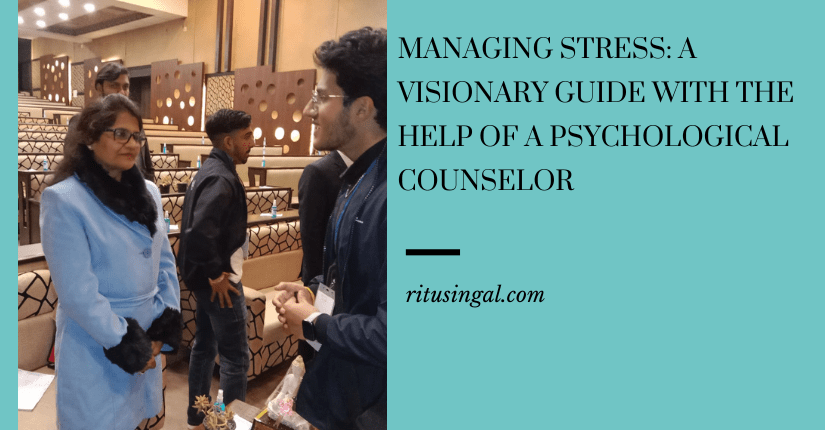There are many situations when things don’t go the way we want them to. When you look outside and even inside your family, not everything happens as you wish it to happen. Other people might do certain things that go completely against your values or expectations.
There might also be times when even a small conversation triggers something deep within you. Anger is a natural emotion. One never intends to get angry unnecessarily. In most cases, we think we got angry because of a particular situation, a person, or an event.
Throughout our day, a lot of things happen that keep on affecting our emotions. A person may feel overwhelmed and frustrated in one moment and happy in the other moment.
No matter what situation you are in, or what emotion you’re experiencing, it all comes to one point that is how you respond to your emotions.
Anger is one emotion that completely relies on your reaction. Expressing anger is what differentiates people. When one person might stay silent while angry, any other person might argue and fight in anger. It all comes to our reaction to the emotion of anger.
When Alexander the Great came to India, he was very impressed with Indians and our way of living. He loved how Indians were a race of brave and fearless people. He was highly satisfied with his tour and made many friends.
Finally, when the time came for him to return, he remembered that his countrymen had asked him to bring something for them. The people of his country wanted Alexander to bring an Indian Yogi. They had heard a lot about yogis and wanted to see one. People of his country had the desire to meet, speak, learn, and receive blessings from an Indian Yogi.
Alexander asked one of his Indian friends where he could find a Yogi. He was told that Yogis dwelt in the forest and he could find one there.
In the quest to search for a Yogi, Alexander headed to forests. When he was looking for a Yogi, he found one underneath a tree. The Yogi was deep in his meditation.
While he was meditating, Alexander did not disturb him but waited for him to open his eyes. After a lot of time, the Yogi opened his eyes. His eyes shined with a divine and mystic light.
Alexander was surprised to see this. Reverently, Alexander requested the Yogi to accompany him to Greece. Alexander said, “ I will give you anything you need or ask for. But, come with me to my country.”
The yogi calmly answered,” I need nothing new, I am happy where I am!” Since no one had ever said no to Alexander, he could not control his anger.
He got very angry and flew into a rage. He took out his sword and pointed it at the Yogi, saying, “ Do you know who is speaking to you? I am the great king Alexander. If you will not listen to what I say, I shall cut you into small pieces.”
The Yogi listened patiently and quietly replied, “ You cannot kill me. You can only kill my outer body. However, the body is just a garment I have worn. I am not the body but the soul that dwells within me.
The Yogi further said, “ You say you are a king. May I tell you who you are?
You are a slave of my slave. Alexander was stunned as he could not understand why he was a slave. Alexander asked, “ How am I a slave to your slave?”
The Yogi further said that he has mastered anger, and now anger has become his slave. However, look how easily Alexander gave way to anger as he was a slave of anger. It further made him a slave of the Yogi.
That day Alexander realized that even though he had conquered the entire world, he could not conquer his anger. His anger was his biggest enemy.
In the same way, today, one can conquer anything but not their anger. The way we respond to anger can break our reputation in a second.
What is Anger Management?
Anger management is the coaching to learn ways of controlling anger. There can be many reasons and causes behind your anger. However, there are an equal number of ways in which you can control or manage your anger. Life coaches use many kinds of anger management techniques. A person can learn and conquer their anger through tested ways.
Understanding triggers: Anger Management Technique
Anger is a natural emotion, just like any other emotion that we go through each day. Any situation, person, or mind can make us feel angry at any point in time. The anger in children and adults come from the same roots.
The causes of anger are broadly classified into two types.
(i) Internal Triggers
(ii) External Triggers
As the names suggest, there are two factors that determine the amount of anger we experience in a day or a moment. Triggers can be feelings, situations, places, people, or things associated with drinking or drug abuse.
- Internal Triggers
Internal triggers are the feelings that a person experiences on the inside. They are not characterized by external factors or surroundings. There are certain emotions or situations that we’re going through which can make us angry. For instance, the guilt of not being loved by someone can make you angry. Another example can be a situation where we can see the anger in children someone else does better than you in studies. We often feel angry in such a situation where no one other than you is involved.
- External Triggers
External triggers are constituted by the external factors that make us angry. Even though anger is an emotion that comes from us, there are certain conditions that trigger anger. For instance, someone slapped you without any reason. You are bound to feel angry in such a situation.
Substance abuse or alcohol is also one of the external factors that raise anger in a person. The intake of such substances elevates all the emotions in a person. It is the reason why a drunk person fights more aggressively than a sober person.
How to identify your triggers?
Now, one problem all people with anger issues face is that they are unable to understand what is exaggerating their triggers. The essential element of anger management is understanding the cause of your anger and then working on it to stop sudden anger for no reason.
However, if a person is unable to understand the reason behind his or her anger, they don’t know where to stop. If we observe our emotional patterns, we can easily understand what triggers us and what calms us. In case, you’re still confused, here are some signs to evaluate and understand your triggers. Many anger management techniques are handy in controlling anger.
External Triggers Checklist
External triggers are the triggers that happen around you. It is more about something that someone else said or did that you make yourself angry. However, external triggers don’t really make you frustrated or aggressive. They just raise the odds that you will get angry. The reaction and way you want to respond to such triggers are in your hands.
- Someone did not agree with me: Let us be honest, today everyone wants everyone to follow and obey their decision. Being an entrepreneur, in my workplace many times I see that there are people who want only their ideas to be implemented. Many times, we become too selfish that even if someone’s opinion is better than ours, we deliberately do not agree with them. Whenever we feel the other person is not
- Someone Teased me: There are many situations when people are not always kind. People often tease and taunt others when they feel insecure or jealous. They may or may not tease you intentionally, but your reaction to such a situation is obvious. You will get furious when someone teases you, and it is quite natural your anger will come out in some form. If you feel triggered when someone teases you, then mark it as a trigger.
- You made a mistake: We all make mistakes. Some mistakes are small, while other mistakes can be bigger. The outcome of some mistakes can be undesirable and make you feel vulnerable. When we make a mistake, we get angry at ourselves. So much so that we degrade ourselves. For instance, you forget to pay the electricity bill before the due date. You’ll be very angry with yourself. It shows that making a mistake triggers your anger.
- I got picked on: Today, people are not very kind to one another. They often pick on the people who are easy targets. Your co-workers, school, or college friends might pick on your time and again. Sometimes, a person becomes their favorite target, and it starts disturbing them. When someone continually frustrates you or makes you feel bad, it will trigger your anger. The only way out is to avoid such people as much as you can instead of expressing anger.
- Someone used my things: Many people prefer to keep their lives private. They do not interfere much in other’s lives, and exchange expect the same from other people. On the other hand, some people are happy to share and help others. Now, when someone uses things of a private person, it frustrates them to their nerves. They get angry and blame the other person for invading their personal space. Even using a small thing like their face wash is enough to trigger their anger. They might or might not show it to you, but they can feel anger in themselves.
- I saw the person I didn’t like: I think we all get triggered in such situations. Whenever we see someone who we don’t like or who has done bad to us, we feel angry. We experience sudden anger for no reason. It is just the face of some person that brings us anger. It can be an ex, your boss, or any family relative. I think it is the easiest way of blaming someone else for the emotions you experience. We easily say, “Usko dekh liya, toh din bura gya.” (I saw his face, and my whole day went very bad). Seeing or talking to someone whom you don’t like is the easiest trigger for anyone.
- They ignored me: We often feel anxious and angry when someone ignores us. It is basic human nature Whenever we realize someone is being rude to us or is ignoring us, we get angry at that person. For instance, you see a friend of yours in a shopping mall. He looks at you and ignores you for any reason. You’ll get very angry and won’t talk to him for the next few days. Although ignorance is a trigger of anger, it cannot be controlled. You cannot stop someone from avoiding you.
Internal Triggers Checklist
Internal triggers happen inside your head. An internal trigger is a thought that comes to your mind after something happens or you meet someone. To be precise, it is the result of a “Self-Talk.”
- I’ll teach him or her a lesson: How often do you say it? Very often, isn’t it? Today, no one wants to listen to or tolerate ignorance. In many situations in life, we have to face different types of people. While some people are kind and generous, the other type of people might be here just for their selfish motives. For example, you had a friend who you admired truthfully. However, she just wanted your support while moving on and decides to leave you once she moves on. Now, you have two options, either you’ll accept and let it go. The other option is revenge, and revenge always comes out of anger. You would think of how much you did for someone and how they left you in the middle. It is the way you trigger your anger on the inside.
- He or She shouldn’t have done that: As I always say, what people around you do is not in your hands. I always tell my clients that no matter how hard you try, you cannot control what the world does to you. Some people are very rude and will never give respect to someone. You can either burst out your anger on them or just let it go. When this feeling, “She shouldn’t push my buttons as that” comes into mind, then you’ve pushed your anger button. You cannot decide what the other person does to you, but you can always control your reaction or response.
- He’s doing it on purpose: It reminds me of a recent incident. A few days ago, one of my company’s employees came to me, red with anger. I asked him what’s wrong and why he’s too angry. He said someone deleted the presentation he had been preparing for the past three days. I was shocked and asked him if he knew who did it or how it happened. He instantly said, “I’m pretty sure Xyz (another employee) did it.” I asked what made him think this way. He said he is always jealous of his progress and looks for ways to bring me down. I asked the management team to investigate and find if this was the case. However, it turned out he forgot to save the file himself.
What I’m trying to say is that mostly we trigger our anger thinking someone did something wrong to us on purpose. Once we feel an act was done deliberately to harass you, we feel angry for many days.
- I’m not letting her get away with this: Ah! The most satisfying feeling of all- revenge. I should do to her what she did to me. Today’s generation believes in tit for tat. If someone did something wrong to us, we look for ways to harm them even more. This trigger depends completely on a person’s attitude. Many people prefer to let go of such situations. However, some people would cross any limit to ensure the other person does not get away with what they did. This anger issue has also raised crimes in the country.
- It is unfair: Since our childhood, we have had a habit of keeping note of what others get versus what we get. When someone else used to get two chocolates, and you got one, you’d get angry about the biased decision. You will then casually say someone took an unfair decision, and so you got angry. Whereas, anger was an internal emotion that simply showed.
What are some physical signs of anger?
Anger has a very adverse effect on our health. A person who always remains angry can never be completely healthy. Stress and anger directly impact our physical health. If you are unable to understand the internal and external triggers, then here are some physical cues that present you’re angry.
- My heart beats faster.
- Your breathing rate increases.
- You might feel stiffness or tight muscles in your body.
- An angry person sweats a lot. If you take a lot of stress or stay angry, then you’ll experience more sweat than other people.
- Another physical sign of anger is a dry mouth. Most people with anger issues often observe the limited formation of saliva.
- Stomach issues are also a very common side-effect of anger. You’d often experience some problems with the stomach after expressing anger.
- One of the most common physical cues of detecting anger is the fists of the person. Commonly, we form a fist while expressing frustration to someone.
- When a person is angry, they’ll talk very fast. It is mainly because they get hyperactive and want to argue without stopping. They start talking fast to complete their sentence.
- Sickness is a very common side-effect of anger. People might get angry with you, but they’ll always vent out their anger in the form of words or thoughts. Mostly, a situation of anger stays with you. You think about many versions of the same argument or situation in your head that further makes you angry each time.
- Sweating underarms or seating in your palms is also a sign of anger.
These are some common physical signs or changes you’d experience when you’re angry. As soon as you start feeling any of these, you should know it is time check and trigger and work on it.
Overall Outlook
In anger management, the primary step is to understand your anger triggers. Once the triggers are found, the problem of anger can be resolved from the root. As I always say, anger is an internal emotion and it is completely in our hands. It is up to us how we react to situations that bring challenges. We should always let go of such situations as not all people and situations require our reaction.







































































































